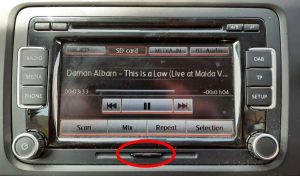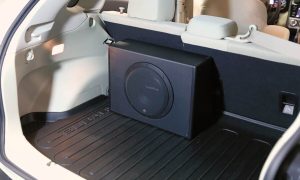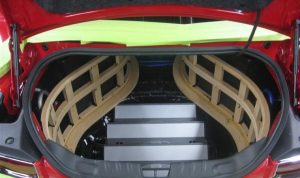Craving a concert-like experience every time you hit the road? A car amplifier transforms your vehicle’s audio system, delivering crisp highs, rich mids, and booming bass that make every drive unforgettable. But what exactly is a car amp, and why does it matter for your car stereo? This guide dives deep into the world of car amplifiers, explaining their role, types, benefits, and how they elevate your listening experience. Whether you’re a casual listener or a die-hard audiophile, you’ll discover why a car amp is the key to unlocking premium sound.
Contents
- What Is a Car Amplifier?
- Why You Need a Car Amplifier
- Types of Car Amplifiers
- How Does a Car Amplifier Work?
- Key Features to Look for in a Car Amplifier
- Installing a Car Amplifier: What You Need to Know
- Matching Your Amplifier to Your Audio System
- Common Myths About Car Amplifiers
- Top Brands for Car Amplifiers
- Conclusion: Amplify Your Drive
What Is a Car Amplifier?
A car amplifier, or amp, acts as the powerhouse of your car audio system. It takes the weak audio signal from your head unit (the stereo or receiver) and boosts it to drive your speakers with clarity and volume. Think of it as the engine that fuels your sound system, ensuring your music plays loud and clear without distortion. Without an amp, even the best speakers struggle to perform, leaving you with flat, underwhelming audio.
Car amps work by amplifying low-level signals into high-power currents that move speaker cones, creating the sound you hear. They come in various sizes and configurations, from compact units for door speakers to heavy-duty models designed for subwoofers. By providing clean power, amps enhance every aspect of your audio, making your favorite tracks come alive.
Why You Need a Car Amplifier
Many factory-installed car stereos include built-in amplifiers, but they often lack the power to deliver high-quality sound, especially at higher volumes. These stock amps struggle to handle upgraded speakers or subwoofers, resulting in distorted or weak audio. A dedicated car amplifier solves these issues, offering several game-changing benefits:
- Superior Sound Quality: Amps deliver clean, distortion-free power, ensuring crisp highs, detailed mids, and deep bass, even at high volumes.
- Power for Upgraded Speakers: Aftermarket speakers and component systems demand more power than a factory head unit can provide. An amp ensures they perform at their peak.
- Subwoofer Support: Subwoofers require significant power to produce low-frequency bass. A dedicated amp, especially a mono-channel model, drives them effectively.
- Customizable Sound: Many amps include controls like gain, crossovers, and EQ settings, letting you tailor the sound to your preferences.
- Overcome Road Noise: A powerful amp ensures your music cuts through engine hum, tire noise, and wind, creating an immersive listening experience.
By adding an amp, you’re not just turning up the volume—you’re elevating the entire audio experience, making every drive feel like a front-row seat at a live show.
Types of Car Amplifiers
Not all car amplifiers are created equal. They come in different classes and channel configurations, each suited for specific audio setups. Here’s a breakdown of the main types:
By Amplifier Class
Amplifier classes refer to the internal circuitry that affects efficiency, heat output, and sound quality. The most common classes for car audio include:
- Class A: Known for high sound fidelity, Class A amps produce minimal distortion but are less efficient, generating significant heat. They’re rare in car audio due to power demands.
- Class B: More efficient than Class A, these amps reduce heat but may introduce crossover distortion, affecting sound quality.
- Class A/B: Combining the best of both, Class A/B amps balance efficiency and sound quality, making them popular for full-range speakers.
- Class D: The go-to choice for modern car audio, Class D amps are highly efficient, produce less heat, and deliver powerful output, especially for subwoofers.
By Number of Channels
Channels determine how many speakers or subwoofers an amp can power. Choose based on your system’s setup:
- Mono Amplifiers: Designed for subwoofers, these single-channel amps deliver high power for deep bass.
- 2-Channel Amplifiers: Ideal for powering a pair of speakers or a single subwoofer (when bridged), offering versatility for smaller systems.
- 4-Channel Amplifiers: Perfect for running front and rear speakers or a combination of speakers and a subwoofer, providing flexibility for full systems.
- Multi-Channel Amplifiers: With 5 or 6 channels, these amps power complex setups, including multiple speakers and subwoofers, for a complete audio overhaul.
Selecting the right class and channel configuration depends on your audio goals, whether you’re boosting door speakers or building a bass-heavy system.
How Does a Car Amplifier Work?
Understanding the inner workings of a car amp helps you appreciate its role in your audio system. Here’s a simple explanation:
- Signal Input: The amp receives a weak audio signal from the head unit via RCA cables or speaker-level inputs.
- Preamplification: The preamp stage processes the signal, adjusting tone, bass, and treble through built-in controls like equalizers or crossovers.
- Amplification: Using transistors and a switched-mode power supply, the amp boosts the signal into a high-power current.
- Output to Speakers: The amplified signal drives the speaker cones, producing audible sound with clarity and volume.
Amps also manage heat through heat sinks, ensuring they operate efficiently without overheating. This process transforms faint audio signals into powerful sound waves, filling your car with rich, dynamic music.
Key Features to Look for in a Car Amplifier
Shopping for a car amp? Focus on these features to find the perfect match for your audio system:
- RMS Power Rating: Measures continuous power output. Match the amp’s RMS to your speakers’ power handling for optimal performance.
- Impedance Compatibility: Ensure the amp supports your speakers’ impedance (measured in ohms) to avoid mismatch issues.
- Crossovers: These filters direct specific frequencies to the right speakers (e.g., lows to subwoofers, highs to tweeters) for balanced sound.
- Gain Control: Adjusts the amp’s output to match the head unit’s signal, preventing distortion.
- Size and Installation: Compact amps fit easily in tight spaces, while larger models may require custom mounting.
- Heat Management: Look for amps with robust heat sinks or cooling fans to maintain performance during long drives.
By prioritizing these features, you’ll choose an amp that enhances your system’s sound while fitting your vehicle’s space and power constraints.
Installing a Car Amplifier: What You Need to Know
Installing a car amp can seem daunting, but with the right approach, it’s a rewarding upgrade. Here’s a step-by-step overview:
- Choose the Location: Common spots include under seats, in the trunk, or behind the dashboard. Ensure proper ventilation to prevent overheating.
- Gather Tools and Materials: You’ll need a wiring kit (power, ground, and remote turn-on wires), RCA cables, a multimeter, and basic tools like screwdrivers.
- Disconnect the Battery: For safety, disconnect the negative battery terminal before working on electrical components.
- Run Power and Ground Wires: Connect the power wire from the battery to the amp and the ground wire to a nearby metal surface.
- Connect RCA and Speaker Wires: Link the head unit to the amp with RCA cables and run speaker wires from the amp to your speakers or subwoofer.
- Secure the Amp: Mount the amp securely to prevent movement while driving.
- Test and Tune: Reconnect the battery, test the system, and adjust gain, crossovers, and EQ settings for optimal sound.
If wiring or configuration feels overwhelming, consider professional installation. Experts ensure proper connections and tuning, maximizing your amp’s performance.
Matching Your Amplifier to Your Audio System
A well-matched amp and speaker setup is crucial for top-tier sound. Follow these tips to ensure compatibility:
- Power Matching: Choose an amp with an RMS power output of 75-150% of your speakers’ RMS rating. For example, a speaker with 100 watts RMS needs an amp delivering 75-150 watts per channel.
- Impedance Alignment: Check that the amp supports your speakers’ impedance (e.g., 2 or 4 ohms) to prevent damage or poor performance.
- System Goals: Decide if you’re prioritizing bass (mono amp for subwoofers) or full-range sound (multi-channel amp for speakers).
- Head Unit Compatibility: If your head unit lacks preamp outputs, select an amp with speaker-level inputs or use a line-level converter.
Using tools like a subwoofer-to-amp calculator can simplify the process, ensuring your components work in harmony for powerful, distortion-free sound.
Common Myths About Car Amplifiers
Misconceptions about car amps can lead to confusion. Let’s debunk a few:
- Myth: Amps Are Only for Loud Music: Amps improve clarity and dynamics at all volume levels, not just high ones.
- Myth: Any Amp Works with Any Speaker: Mismatched power or impedance can damage components or degrade sound quality.
- Myth: Factory Amps Are Enough: Stock amps often lack the power and finesse needed for premium audio, especially with aftermarket upgrades.
- Myth: Amps Drain Your Battery: With proper wiring and a capacitor, amps won’t excessively drain your car’s battery when off.
Understanding the truth behind these myths helps you make informed decisions when upgrading your car audio system.
Top Brands for Car Amplifiers
Choosing a reliable brand ensures quality and durability. Some of the best car amplifier brands include:
- Rockford Fosgate: Known for powerful, efficient amps with excellent sound quality.
- Kicker: Offers versatile amps for both speakers and subwoofers, with robust build quality.
- JL Audio: Premium amps with crystal-clear output and advanced features.
- Alpine: Delivers compact, high-performance amps ideal for space-constrained setups.
- Kenwood: Budget-friendly yet reliable amps for various audio systems.
Researching these brands and reading user reviews can guide you to an amp that fits your needs and budget.
Conclusion: Amplify Your Drive
A car amplifier is more than just a component—it’s the heart of a high-quality car audio system. By boosting weak signals, delivering clean power, and supporting upgraded speakers or subwoofers, an amp transforms your vehicle into a rolling concert hall. Whether you’re upgrading a factory stereo or building a custom setup, choosing the right amp unlocks the full potential of your music.
Ready to elevate your car audio? Start by assessing your system’s needs, selecting an amp with the right power and features, and ensuring proper installation. With the perfect amplifier, every drive becomes a sonic adventure, filled with crystal-clear sound and heart-pounding bass. Explore premium car audio upgrades today and unleash the power of sound on the road!






